It looks like you're using an Ad Blocker.
Please white-list or disable AboveTopSecret.com in your ad-blocking tool.
Thank you.
Some features of ATS will be disabled while you continue to use an ad-blocker.
share:
I have been seeing a lot of healthy food posts on ATS recently so thought I would post a few potentially fatal foods into the mix
First up we have
Oysters
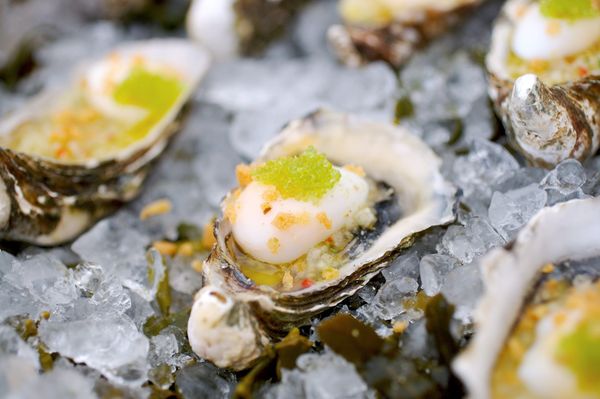
Ackee, Jamaica
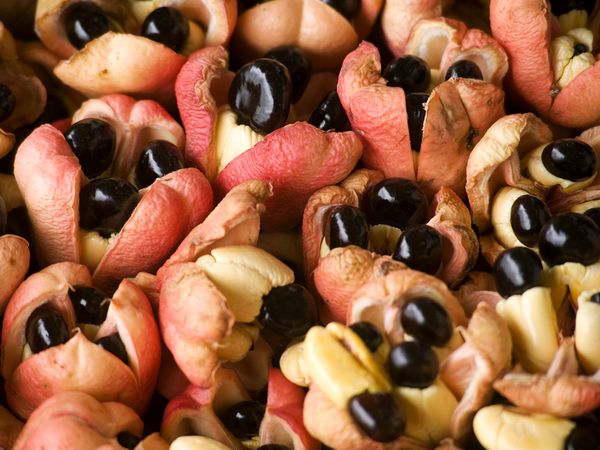
Tuna
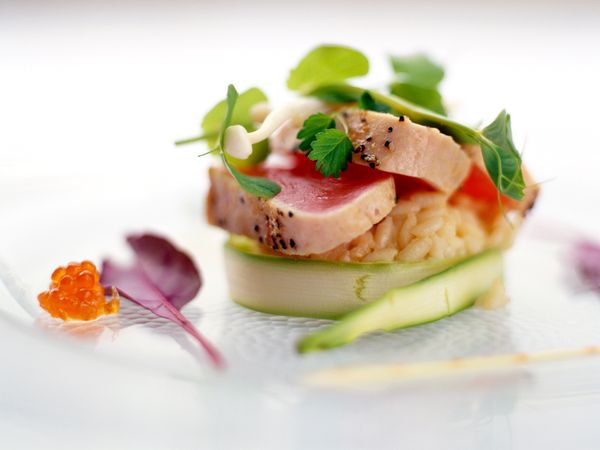
Sannakji, Korea
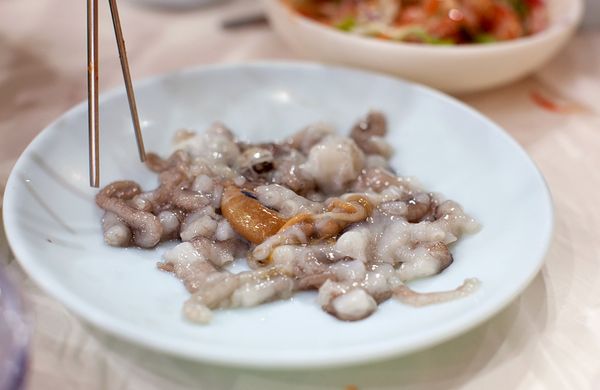
Mushrooms
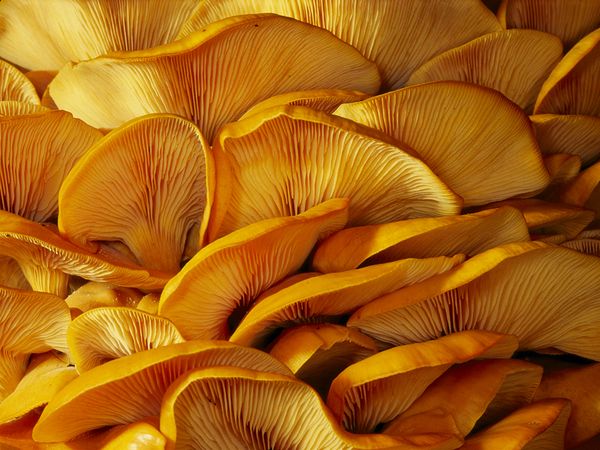
Kidney Beans
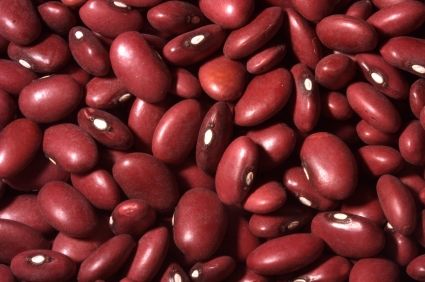
Cherries, Apricots, Peaches and Plums

Rhubarb Leaves

Raw Cassava
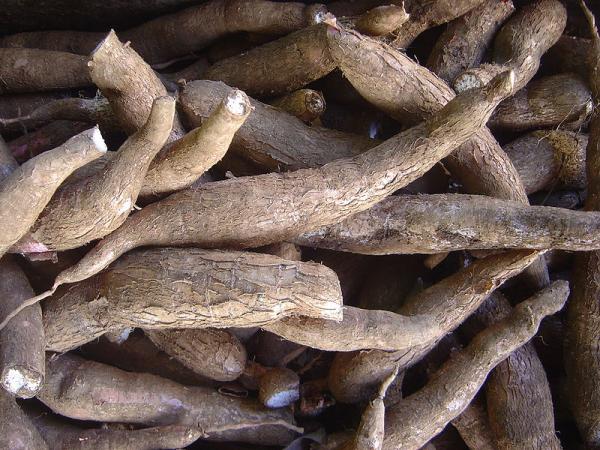
I suppose most people already know about mushrooms and kidney beans but the fruit pits and rhubarb leaves were new to me.
Feel free to add any others you know of.
Link 1
Link2
First up we have
Oysters

Here's a pearl of wisdom: Sniff after you shuck, and swallow only when you're certain. Of the riskiest foods regulated by the U.S. Food and Drug Administration, raw oysters rank high for their outbreak-causing potential. The two pathogens wreaking the most havoc are Norovirus (which can cause gastroenteritis) and Vibrio, a bacterium related to cholera that can cause fever, septic shock, blistering skin lesions, and even fatal septicemia.
Ackee, Jamaica

With the common name "vegetable brain" and a pedigree to boot—this lychee relative is the national fruit of Jamaica—you'd think ackee would be an all-around crowd-pleaser. But the pear-shaped pods of this West African tree can deliver a deadly bite if eaten prior to ripening. It's a beachside buzz kill to come down with Jamaican vomiting sickness and seizures; death, a very real risk, is the ultimate vacation wrecker. The solution: Patience. To enjoy this delicious and nutritious produce, it's essential to wait until the fruit turns bright red and its spongy flesh peels away from the toxic black seeds within. Then, boil it up, season appropriately, and serve with saltfish. Voila: It's Jamaica's national dish.
Tuna

Pollution caused by industrial waste gave rise to the methylmercury-related illnesses, including development deficits in children, that have placed tuna—tuna steaks and canned tuna—on many no-no lists. But pathogens such as scombrotoxin, brought on by improper handling of fresh fish, sicken hundreds of people each year. Symptoms run the gamut from headaches to diarrhea and even loss of vision. The safest solution: Keep your fish cool and only eat at reputable restaurants.
Sannakji, Korea

Suction cups are not typically on the American menu, but in Korea, the consumption of live baby octopus tentacles is considered a hoe (raw dish) delicacy. Although removed from the body, sliced into bite-size bits and dressed with sesame oil and sesame seeds, the squirming tentacles have a way of sticking around—in your throat—thanks to still-active suction cups, which present a choking hazard. The safest solution is to chew it 100 times before swallowing. And don’t talk with your mouth full.
Mushrooms

Truffle hunting in Tuscany sounds like an idyllic way to spend a holiday. But beware: While there's good fungus among us, the tasty porcini has some poisonous cousins. Even when their names spell certain doom—death cap, destroying angels, among them—look-alike mushrooms can create a toxic menace. Is that a morel you're eating or a highly poisonous Gyromitra? A delicious chanterelle or an evil jack o'lantern (pictured here)? The poisonous galerina or the hallucinogenic psilocybe? You'd better know exactly what you're looking for, because many mushrooms are decidedly not magical.
Kidney Beans

Kidney beans contain the toxin phytohaemagglutinin, which will make you extremely ill and in some rare cases has killed. The beans MUST be boiled for 10 minutes before cooking, and that includes slow cooking. These beans become five times more toxic when heated to the temperatures used in slow cooking than they are when raw, so never just add them to a stew or chili without boiling them first. Better yet, use canned kidney beans. Only a few will land you in hospital wishing you had died. A few more and there is no wishing about it.
Cherries, Apricots, Peaches and Plums

Cherries, apricots, peaches and plums contain cyanogenic glycosides that creates cyanide in the pits. Swallowing a pit or two is not going to have much effect - our bodies will deal with a certain amount of cyanide but it is more dangerous if you chew them. This makes children particularly vulnerable, especially if they get into a full bowl and don't de-pit the fruit. Some people die every year (not just children) from eating too many pits, but you do have to work at it. For most of us, one or two is not a problem.
Rhubarb Leaves

If you are an adventurous gardener, be aware that rhubarb leaves are not the healthy bitter green you might assume. There is a reason that rhubarb sold in your grocery store is sold without its leaves. Rhubarb leaves contain dangerously high levels of oxalic acid which can cause serious kidney damage potentially leading to death. Even though a 140 pound person would need to eat about 10 pounds of rhubarb leaves to die, a small amount still has the ability to make a person sick. When you're making a salad with fresh greens from your garden, steer clear of rhubarb leaves.
Raw Cassava

One of the most consumed carbohydrates in the world, cassava, contains naturally occurring cyanogenic glycosides. Also known as yucca, this starchy tuber must always be dried, soaked, and cooked properly. In Africa, improperly processed cassava is a major problem and is associated with a number health disorders, particularly among people who are already malnourished. The toxin is primarily found in the leaves which protects it from being eaten by insects or animals, but the roots still contain a significant amount of natural poison and long-term exposure to this raw food can lead to deadly consequences. The proper processing of cassava includes drying, soaking in water, rinsing or cooking very soon after it is harvested.
I suppose most people already know about mushrooms and kidney beans but the fruit pits and rhubarb leaves were new to me.
Feel free to add any others you know of.
Link 1
Link2
The baby suction cups sticking to the inside of your throat got me to dry heave a bit. That's sickening. I will try a lot of things, but I will never
try that.
I don't care if I'm missing out on something delicious, I don't want my obituary to say, "Died from not chewing the baby tentacle suction cups enough times so it stuck to the inside of her throat and killed her." Mass confusion.
Thanks for the very informative thread.
S&F
I don't care if I'm missing out on something delicious, I don't want my obituary to say, "Died from not chewing the baby tentacle suction cups enough times so it stuck to the inside of her throat and killed her." Mass confusion.
Thanks for the very informative thread.
S&F
Kidney beans. Never, ever have I heard this.
Cool information there. Oysters, only eat fried. Raw will never happen. Safe
Cool information there. Oysters, only eat fried. Raw will never happen. Safe
reply to post by Lady_Tuatha
I don't know all about the cherry thing? I used to sit down as a kid with a popcorn bowl filled with bing cherries from my parents tree eating the entire thing.....Might have to hit the bathroom, but nothing crazy!!
The sushi......Really? Who didn't know that going in? Raw fish......Kinda speaks for itself
Baby octopus tentacles raw? Um......No thanks.....
Pretty cool find though.....Never knew about the fruit or kidney bean thing.....
I don't know all about the cherry thing? I used to sit down as a kid with a popcorn bowl filled with bing cherries from my parents tree eating the entire thing.....Might have to hit the bathroom, but nothing crazy!!
The sushi......Really? Who didn't know that going in? Raw fish......Kinda speaks for itself
Baby octopus tentacles raw? Um......No thanks.....
Pretty cool find though.....Never knew about the fruit or kidney bean thing.....
reply to post by Lady_Tuatha
ive eaten all of those and alot of it and i still do
almonds. tomatoes are also poisonous you just gotta know when to eat and how.
ive eaten all of those and alot of it and i still do
almonds. tomatoes are also poisonous you just gotta know when to eat and how.
reply to post by Lady_Tuatha
Interesting post - Thanks!
It's rhubarb season in the midwest - have a rhubarb pie in the fridge. I knew the leaves are poison, but I bet a lot of people don't.
Interesting post - Thanks!
It's rhubarb season in the midwest - have a rhubarb pie in the fridge. I knew the leaves are poison, but I bet a lot of people don't.
Thanks for posting all those things. I definitely did not know about the kidney beans and the cherries. I just had some yesterday and I gave some to
my 7yr old. I told him to spit out the pits and he did. Ill have to watch him more carefully just in case now. Thanks !
reply to post by Tlexlapoca
Tomatoes are not poisonous. The stems and leaves are.
They contain a poisonous alkaloid that's very deadly.
They're part of the nightshade family. The fruit itself isn't deadly.
Tomatoes are not poisonous. The stems and leaves are.
They contain a poisonous alkaloid that's very deadly.
They're part of the nightshade family. The fruit itself isn't deadly.
reply to post by Quyll
ok, ok sorry not the whole tomatoe but that little green stem that you cut off is, that eventually is still part of the tomatoe jeez
ok, ok sorry not the whole tomatoe but that little green stem that you cut off is, that eventually is still part of the tomatoe jeez
Cool! I used to work in a produce department, and knew most of them. Didn't know the Jamaican fruit, and wouldn't eat it anyway.
Where I live in NE Indiana, it is morel mushroom season. They are safe here, because the look-alike is not found here. The chanterelles look-alikes were scary though. I would have guessed they were chanterelles.
But that being said, I would only ever eat morels and giant puff balls if picking for myself.
That people eat things raw, alive, and/or moving escapes me totally.
Where I live in NE Indiana, it is morel mushroom season. They are safe here, because the look-alike is not found here. The chanterelles look-alikes were scary though. I would have guessed they were chanterelles.
But that being said, I would only ever eat morels and giant puff balls if picking for myself.
That people eat things raw, alive, and/or moving escapes me totally.
reply to post by DaphneApollo
I think most of the tinned kidney beans are precooked so are pretty safe just to be reheated, It is the dried kidney beans that need a good boiling.
I love red kidney beans, one of the few vegetables that I like
I think most of the tinned kidney beans are precooked so are pretty safe just to be reheated, It is the dried kidney beans that need a good boiling.
I love red kidney beans, one of the few vegetables that I like
Knew most of that but not the Jamaican food. Ta for that.
IN fact rhubarb stems landed me in hospital with tachycardia over 250 BPM. Turns out there is Oxalic acid in Rhubarb and the night before I had eaten a lovely homemade crumble made of homegrown rhubarb.
Plus my mum was allergic to Kidney beans, so I don't eat them. Later on we found out my bloodline has Porphyria and Kidney beans are a no-no, as they can lead to death, via Tachycardia and heart arrythmias.
I bit into an Oyster once and I could not swallow at all-YUCK they are gross.
Who'd have thought food could be so dangerous????? :-O
IN fact rhubarb stems landed me in hospital with tachycardia over 250 BPM. Turns out there is Oxalic acid in Rhubarb and the night before I had eaten a lovely homemade crumble made of homegrown rhubarb.
Plus my mum was allergic to Kidney beans, so I don't eat them. Later on we found out my bloodline has Porphyria and Kidney beans are a no-no, as they can lead to death, via Tachycardia and heart arrythmias.
I bit into an Oyster once and I could not swallow at all-YUCK they are gross.
Who'd have thought food could be so dangerous????? :-O
reply to post by Tlexlapoca
I'm sorry if that came off as rude! That was not my intention at all! I should have put a smily face in there or something equally as friendly. I apologize if I came off as offensive. That was not my intention.
I'm sorry if that came off as rude! That was not my intention at all! I should have put a smily face in there or something equally as friendly. I apologize if I came off as offensive. That was not my intention.
I love to eat raw oysters at my favorite seafood restaurant. My wife always tries to discourage it since it is so risky.
I do not eat them in the warm months (any month which includes an R).
I do not eat them in the warm months (any month which includes an R).
Good thread!
Here's some more...
Almonds
What could hurt you: There are two variations of almonds, sweet almonds and bitter almonds. The bitter ones supposedly contain relatively large amounts of hydrogen cyanide.
How much could kill you: It's said that even eating just 7 - 10 raw bitter almonds can cause problems for adults, and could be fatal for children.
Unpasteurized Honey
What could hurt you: Because it doesn't go through the pasteurization process in which harmful toxins are killed, unpasteurized honey often contains grayanotoxin. That can lead to dizziness, weakness, excessive sweating, nausea, and vomiting that last for 24 hours.
How much could kill you: Typically just one tablespoon of concentrated grayanotoxin can cause the symptoms above. Consuming multiple tablespoons would be a bad idea.
Cashews
What could hurt you: Raw cashews you might find in a supermarket are not actually raw, as they've been steamed to remove the urushiol, a chemical also found in poison ivy. This chemical can cause the same effect as poison ivy, or poison oak.
How much could kill you: High levels of urushiol can supposedly prove fatal. People who are allergic to poison ivy are likely to have a fatal allergic reaction to eating actual raw cashews.
Elderberries
What could hurt you: These berries are often used in jams, jellies, and wines. Their leaves, twigs, and seeds contain cyanide-producing glycoside. Nausea, vomiting, diarrhea, and coma are the symptoms to look forward to.
How much could kill you: Suffice it to say, hope your herbal tea was prepared correctly, and that whoever made your jam or wine strained the fruit. Also, never eat them unripe.
Deadly Dishes
And don't forget the humble Hot Dog which is a major cause of choking in young and old alike.
Here's some more...
Almonds
What could hurt you: There are two variations of almonds, sweet almonds and bitter almonds. The bitter ones supposedly contain relatively large amounts of hydrogen cyanide.
How much could kill you: It's said that even eating just 7 - 10 raw bitter almonds can cause problems for adults, and could be fatal for children.
Unpasteurized Honey
What could hurt you: Because it doesn't go through the pasteurization process in which harmful toxins are killed, unpasteurized honey often contains grayanotoxin. That can lead to dizziness, weakness, excessive sweating, nausea, and vomiting that last for 24 hours.
How much could kill you: Typically just one tablespoon of concentrated grayanotoxin can cause the symptoms above. Consuming multiple tablespoons would be a bad idea.
Cashews
What could hurt you: Raw cashews you might find in a supermarket are not actually raw, as they've been steamed to remove the urushiol, a chemical also found in poison ivy. This chemical can cause the same effect as poison ivy, or poison oak.
How much could kill you: High levels of urushiol can supposedly prove fatal. People who are allergic to poison ivy are likely to have a fatal allergic reaction to eating actual raw cashews.
Elderberries
What could hurt you: These berries are often used in jams, jellies, and wines. Their leaves, twigs, and seeds contain cyanide-producing glycoside. Nausea, vomiting, diarrhea, and coma are the symptoms to look forward to.
How much could kill you: Suffice it to say, hope your herbal tea was prepared correctly, and that whoever made your jam or wine strained the fruit. Also, never eat them unripe.
Deadly Dishes
And don't forget the humble Hot Dog which is a major cause of choking in young and old alike.
reply to post by Lady_Tuatha
It is so refreshing to see a unique, creative, and ultimately informative thread! I wish more would follow suit. Major respect for that
At one point I was juicing all kinds of greens: spinach, kale, romaine, parsley, you name it. I was also making fresh carrot juice as well. One time I bought a few bunches of carrots with the greens still attached. I decided to throw all of it into the blender. Plenty of greens, right?
Apparently it's not very smart to eat carrot greens. Most juicing recipes I've seen say not to juice them!
It is so refreshing to see a unique, creative, and ultimately informative thread! I wish more would follow suit. Major respect for that
At one point I was juicing all kinds of greens: spinach, kale, romaine, parsley, you name it. I was also making fresh carrot juice as well. One time I bought a few bunches of carrots with the greens still attached. I decided to throw all of it into the blender. Plenty of greens, right?
Apparently it's not very smart to eat carrot greens. Most juicing recipes I've seen say not to juice them!
While the greens of the common garden-variety of carrot aren't quite as deadly as that of the wild carrot, some still regard them as toxic due to the presence of both alkaloids and nitrates in the greens. While many report the greens leaving a bitter taste in the mouth, others experience some of the side effects of exposure to alkaloids or nitrates. These include a burning sensation in the mouth and throat, increased heartbeat, elevated blood pressure, agitation and possibly even death.
greengoddessgourmet.blogspot.com...
reply to post by Quyll
I had to smile at the thought of that obituary.Though why anyone would want to eat something that's still wriggling???Fried battered calamari is so delicious+without the sadistic game show quality.Interesting thread OP,s+f.
Surprised about the kidney beans+rhubarb leaves though
I had to smile at the thought of that obituary.Though why anyone would want to eat something that's still wriggling???Fried battered calamari is so delicious+without the sadistic game show quality.Interesting thread OP,s+f.
Surprised about the kidney beans+rhubarb leaves though
edit on 29-5-2013 by Raxoxane because: (no reason given)
edit on
29-5-2013 by Raxoxane because: (no reason given)
reply to post by Chrisfishenstein
Sushi is SOOO good!!! But make sure you have it at a reputable seafood restaurant.
There's a place in the provincial capital that has Asian sushi chefsThat's where I have mine..Safe to eat+so delicious-i would actually eat sushi everyday of my life if i could.Its extremely healthy.
Sushi is SOOO good!!! But make sure you have it at a reputable seafood restaurant.
There's a place in the provincial capital that has Asian sushi chefsThat's where I have mine..Safe to eat+so delicious-i would actually eat sushi everyday of my life if i could.Its extremely healthy.
reply to post by Lady_Tuatha
Thanks for posting this information. I guess it's true, what they say, "I learn something new everyday."
F&S for the OP!
Thanks for posting this information. I guess it's true, what they say, "I learn something new everyday."
F&S for the OP!
Originally posted by csimon
I love to eat raw oysters at my favorite seafood restaurant. My wife always tries to discourage it since it is so risky.
I do not eat them in the warm months (any month which includes an R).
Sorry, I forgot to mention that I just had 24" of gastroenteritis removed from my body only 5 weeks ago, along with a benign softball sized tumor that was embedded into it. Second line.
new topics
-
Fire insurance in LA withdrawn months ago
General Conspiracies: 12 minutes ago -
Bizarre Labour Party Tic Toc Video Becomes Even More Embarrassing
Regional Politics: 8 hours ago
top topics
-
The elephant in the room (wearing a hoodie)
US Political Madness: 15 hours ago, 14 flags -
Dr. Demento
Music: 15 hours ago, 6 flags -
Bizarre Labour Party Tic Toc Video Becomes Even More Embarrassing
Regional Politics: 8 hours ago, 4 flags -
Potter to WHU
World Sports: 14 hours ago, 2 flags -
Fire insurance in LA withdrawn months ago
General Conspiracies: 12 minutes ago, 1 flags
active topics
-
Statements of Intent from Incoming Trump Administration Members - 2025 to 2029.
2024 Elections • 61 • : cherokeetroy -
Judge rules president-elect Donald Trump must be sentenced in 'hush money' trial
US Political Madness • 83 • : WeMustCare -
Fire insurance in LA withdrawn months ago
General Conspiracies • 0 • : annonentity -
Los Angeles brush fires latest: 2 blazes threaten structures, prompt evacuations
Mainstream News • 282 • : marg6043 -
S.C. Jack Smith's Final Report Says Trump Leads a Major Conspiratorial Criminal Organization!.
Political Conspiracies • 46 • : DdPoolDude -
-@TH3WH17ERABB17- -Q- ---TIME TO SHOW THE WORLD--- -Part- --44--
Dissecting Disinformation • 3978 • : RelSciHistItSufi -
Gravitic Propulsion--What IF the US and China Really Have it?
General Conspiracies • 39 • : budbayview -
The elephant in the room (wearing a hoodie)
US Political Madness • 26 • : xuenchen -
Its Looking Like Schiff - Vindman - Ciaramella Conspired to Impeach President Trump.
Political Conspiracies • 188 • : WeMustCare -
Trump's idea to make Canada the 51st US state: 'Potential is massive'
Mainstream News • 155 • : DaydreamerX
